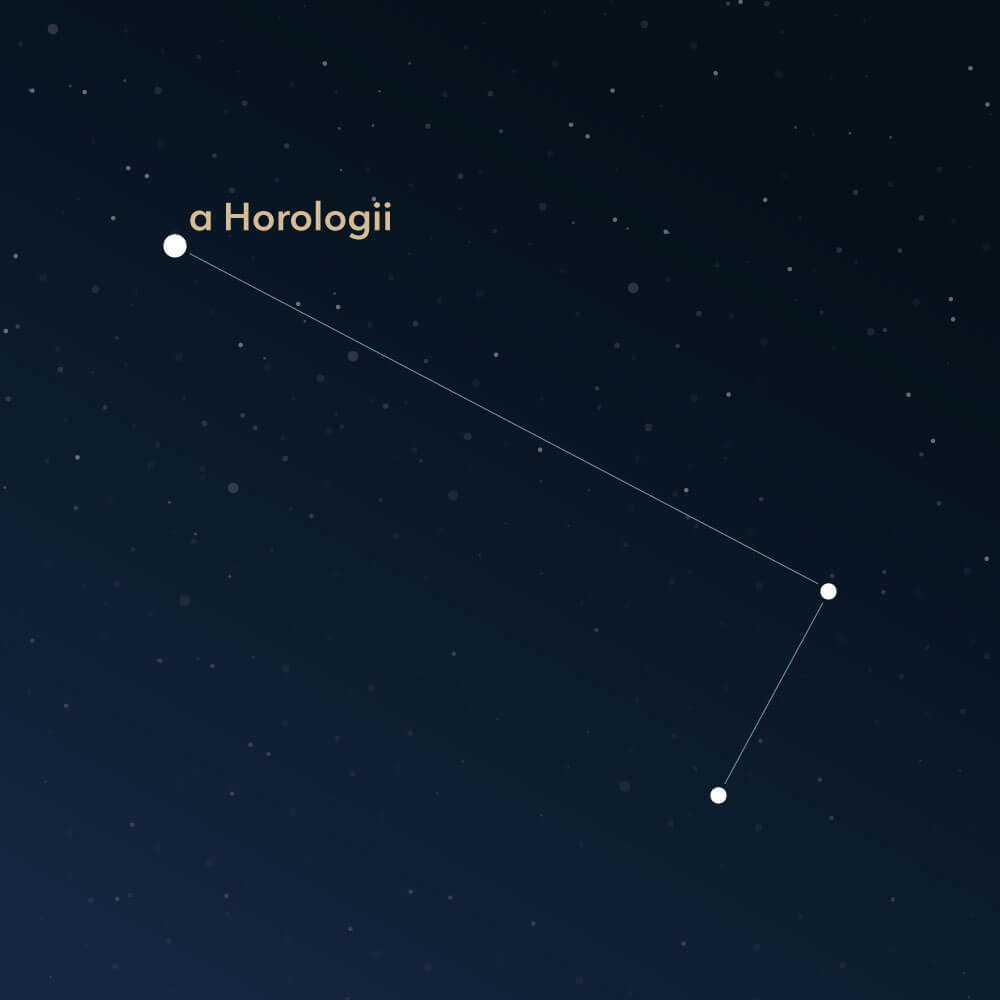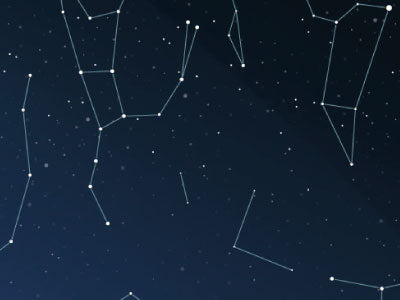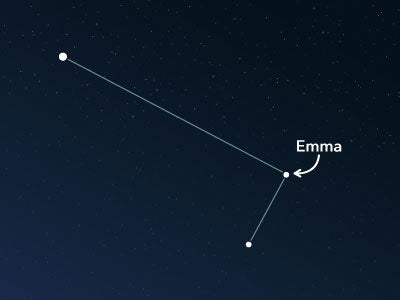The constellation Horologium
Characteristics
- Other names / Symbolism
- Pendulum Clock
- Hemisphere
- Southern hemisphere
- Visibility
- October - December
- Area
- 249 deg²
- Brightest star
- α Horologii (HIP number 19747)
- Specialties
- Galaxies, globular clusters

The Horologium, Latin for pendulum clock, is a faint constellation in the southern celestial sky. It was introduced by the French astronomer Nicolas Louis de Lacaille in the 18th century. There are only a few deep-sky objects in its area.
Hemisphere, visibility, and area
The constellation of Horologium lies in the southern sky and can be seen from all regions of the southern hemisphere. However, north of the equator, it is only fully visible up to the 23rd parallel. This corresponds to locations such as Havana in Cuba or southern parts of the Western Sahara. Thus, it cannot be observed in areas such as the United States, Canada, and Europe.
The best time to observe Horologium is from October to December. It covers an area of about 249 square degrees in the night sky and ranks 58th in size among all 88 constellations.
In star charts, Horologium is usually depicted as a chain of stars. Either a multitude of stars is connected to each other or only the three main stars. The brightest star is α Horologii (Alpha Horologii), which has a mere apparent magnitude of roughly 3.85 and forms the northernmost point of the visualization.
There are no bright stars in the constellation, which makes it challenging to find the Horologium in the night sky. Therefore, the adjacent constellations can be a helpful guide in the search.
To the north, the great river Eridanus extends with its impressively bright star Achernar. To the east and southeast, there is the Hydrus. In the other direction are the Reticulum, the Dorado, and the Caelum.
Specialties in the constellation
The Horologium constellation is located away from the Milky Way, which on the one hand, results in few objects such as star clusters, but on the other hand, it offers a wonderful view into the depths of the dark night sky.
Nevertheless, there is one globular star cluster in this constellation, which is cataloged as NGC 1261. Its apparent brightness is about 8.4 mag. The Scottish astronomer James Dunlop discovered it in September 1826.
At the same time, James Dunlop found the barred spiral galaxy NGC 1433. Its apparent brightness is roughly 9.8 mag. Its distance from the Milky Way is estimated to be around 41 million light-years.

History
The Horologium is one of 14 constellations introduced by the French astronomer and mathematician Nicolas Louis de Lacaille in the mid-18th century. During the years 1750 to 1754, while collecting data on over 10,000 stars from the vicinity of Cape Town in South Africa as part of the invention of the telescope, he discovered that there were still some areas of the sky that had not been adequately defined. So he decided to introduce a couple of new constellations.
The inspiration for the names of the new constellations was always drawn from innovations in technology and art. That is a fundamental difference from the constellations of antiquity, which typically bear the names of mythological figures.
The constellation Horologium is intended as a tribute to the pendulum clock invented by Christiaan Huygens in the 17th century. This clock enabled precise time calculations for astronomical events. Initially introduced under the Latin name "Horologium Oscillitorium," it was later shortened to the more familiar term "Horologium" (English: Pendulum Clock).
Constellation Visibility Tool
Los Angeles, USA
34.05°, -118.24°
Constellation Observing Guide
This guide shows when the constellation is visible above the horizon and provides the optimal viewing window when the sky is darkest. Times are displayed in the location's timezone (PDT).
No Optimal Window Found
The constellation's visibility doesn't overlap with the darkest part of the night during the next 48 hours.
Alternative Viewing Options
You can still observe the constellation when it's above the horizon, but there may be some twilight interference. Consider checking again in a few days as visibility patterns change throughout the year.
Constellation Visibility from Your Location
2
Visible Stars
1
Never Rise
0
Always Up
67%
Visible
1 stars are too far south to be visible from your latitude (34.1°N)
Constellation Visibility
When the constellation is above the horizon (includes daylight hours)
Rises
09:03
Jun 6
Fully Up
Partly Visible Only
Starts Setting
15:42
Jun 5
Fully Set
12:02
Jun 6
Above Horizon Times
Includes daylight hours when stars aren't visible to naked eye.
Astronomical Night
When the sky is darkest (sun >18° below horizon)
Dark sky begins
21:13
Jun 5
Dark sky ends
04:43
Jun 6
Darkest Sky Period
Sun more than 18° below horizon. Best for faint objects.
Observing Tips
Read more interesting articles

An overview of all 88 constellations
Learn more about all 88 constellations and read interesting information about the mythology, visibility, and features.

Planetarium App
Discover the night sky with our planetarium app!
Available for iOS and Android.

Name a star in the constellation Horologium
Name a star in a constellation and create something that lasts for eternity.